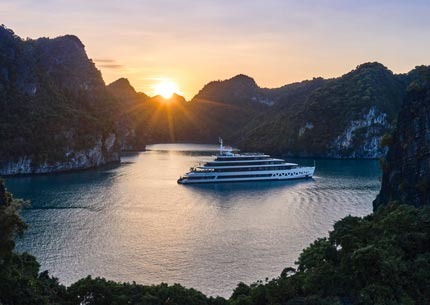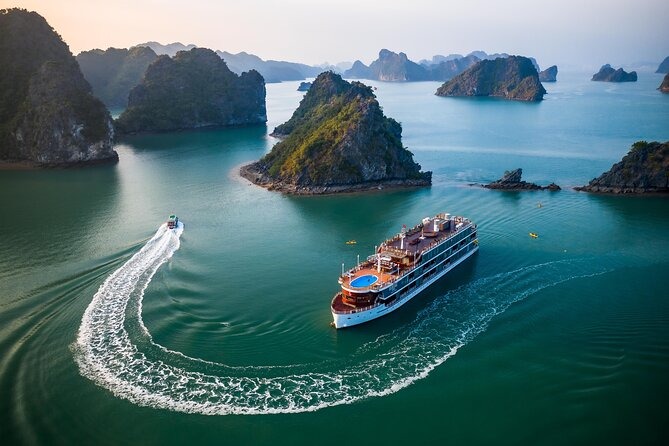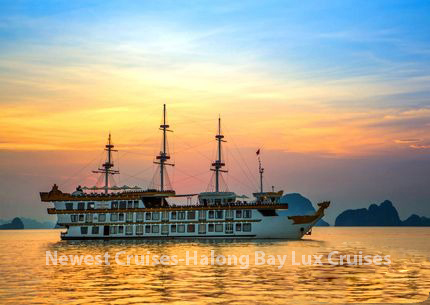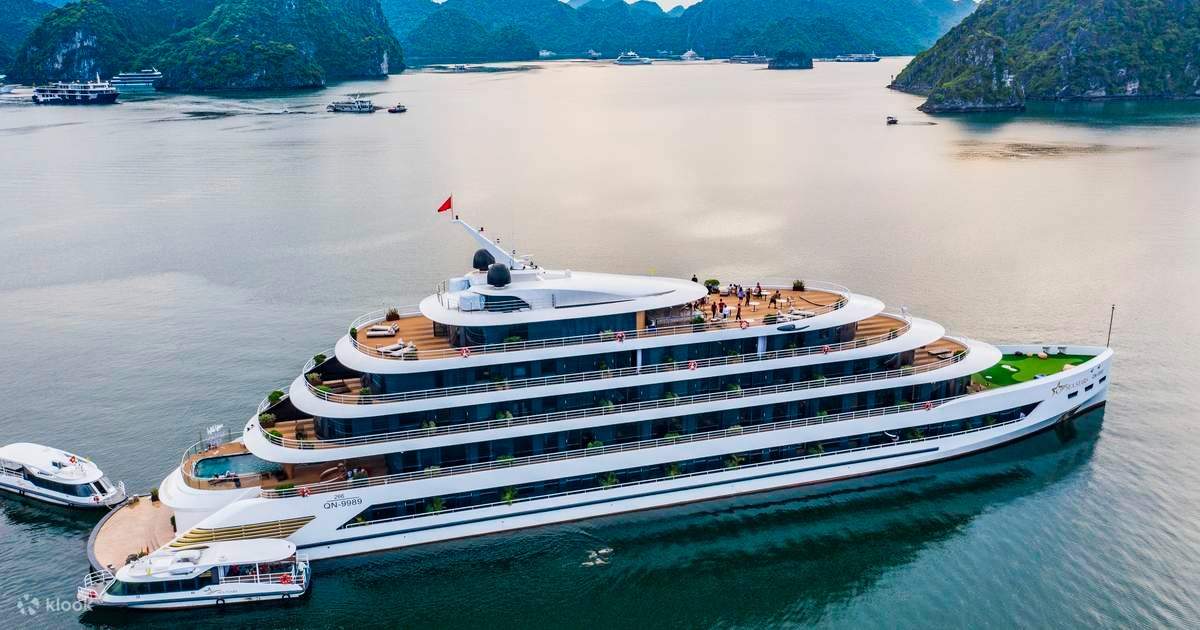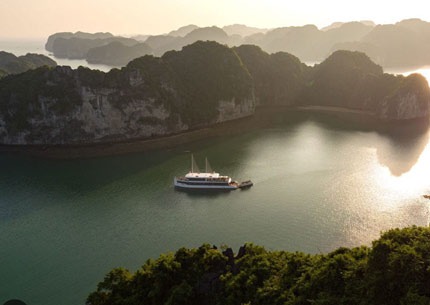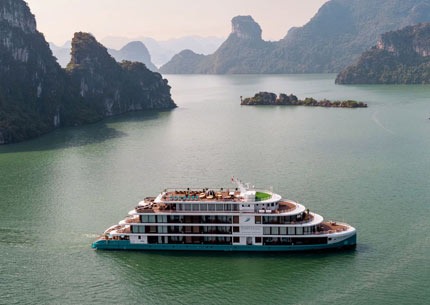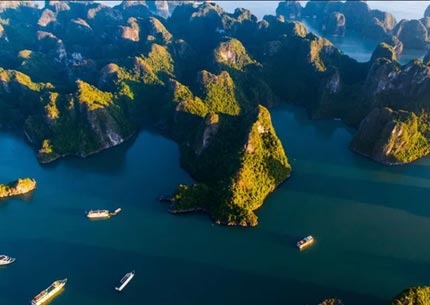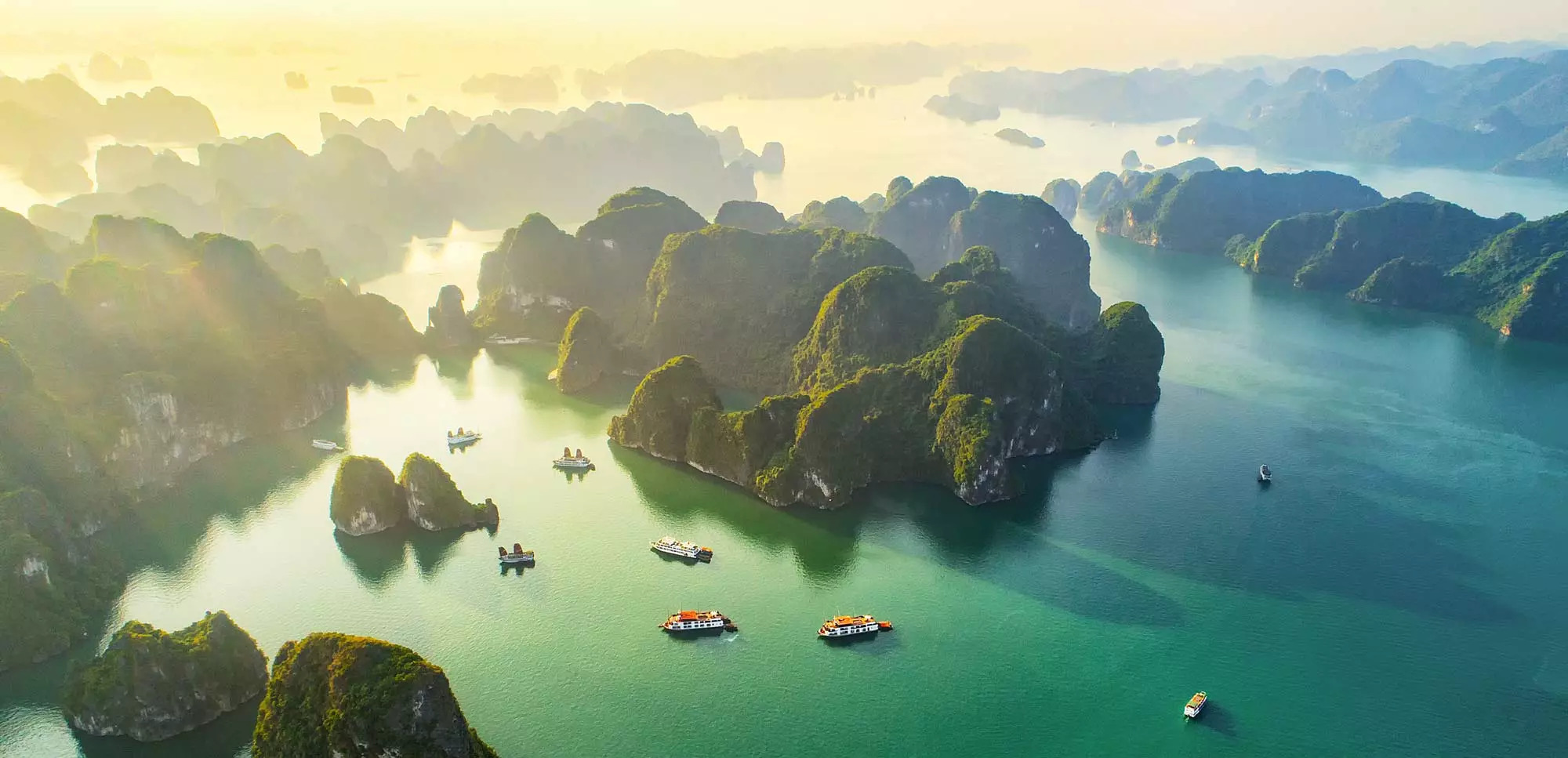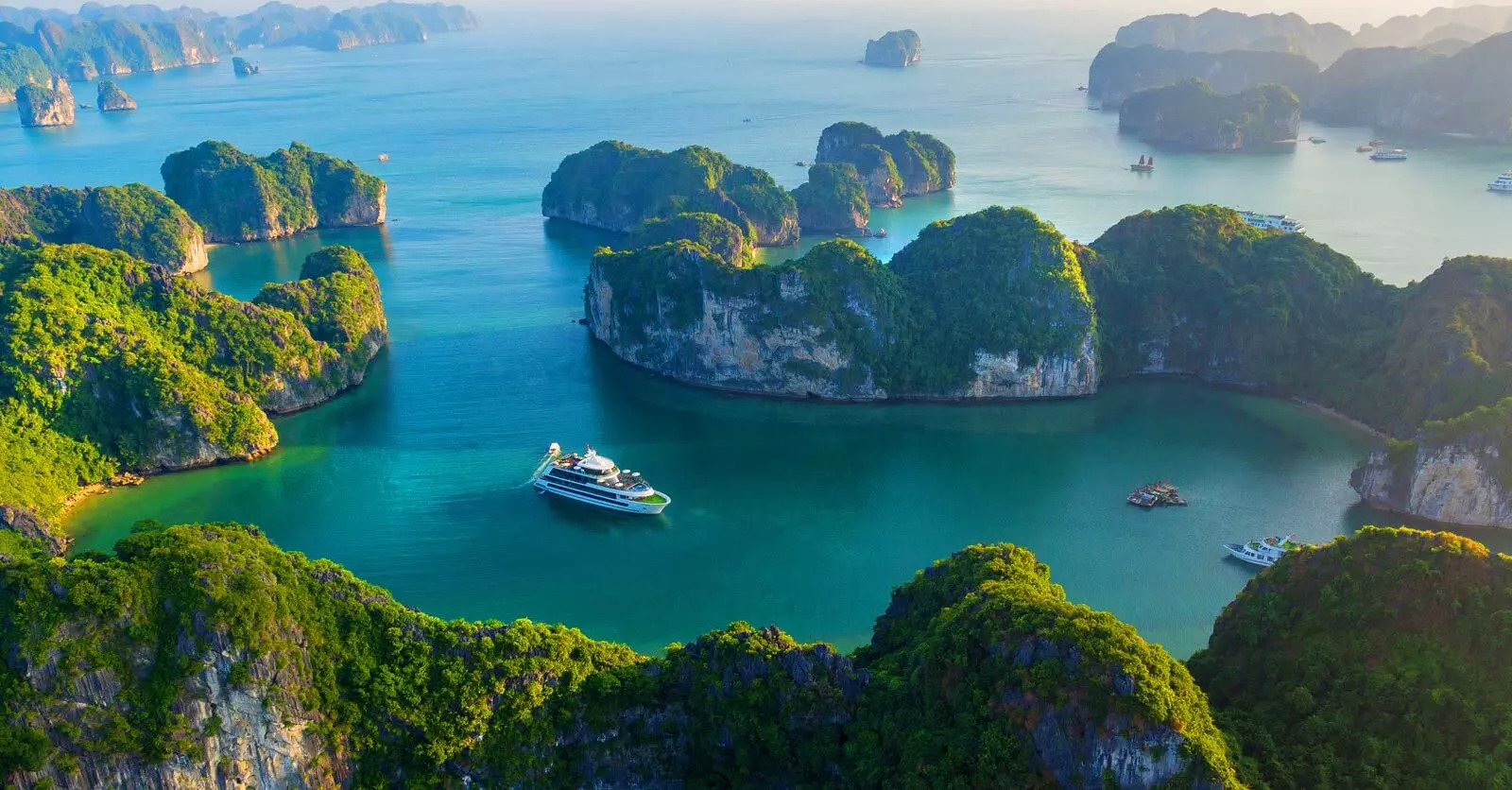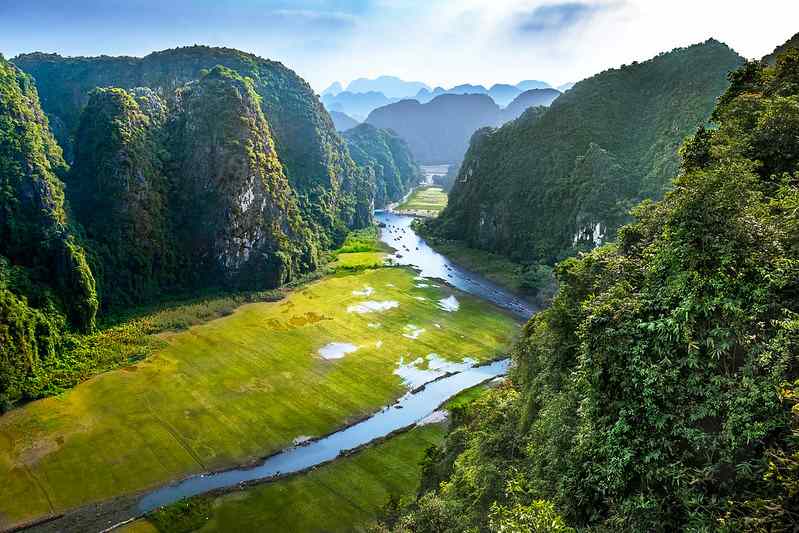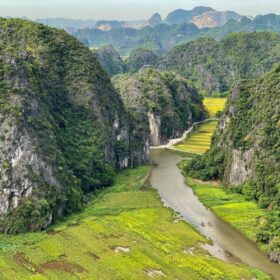Worst Time to Visit Sapa in 2025-2026: Weather Warnings & Smart Travel Tips
Planning your Sapa adventure in 2025? when the worst time to visit Sapa. This misty mountain paradise in northern Vietnam offers breathtaking landscapes and rich cultural experiences—but timing is everything. Discover when to avoid Sapa’s challenging weather conditions, learn what to pack for each season, and find the perfect month for your travel goals. Our comprehensive guide ensures you’ll enjoy Sapa’s magic without the mudslides, heavy fog, or transportation nightmares that can derail your dream vacation.
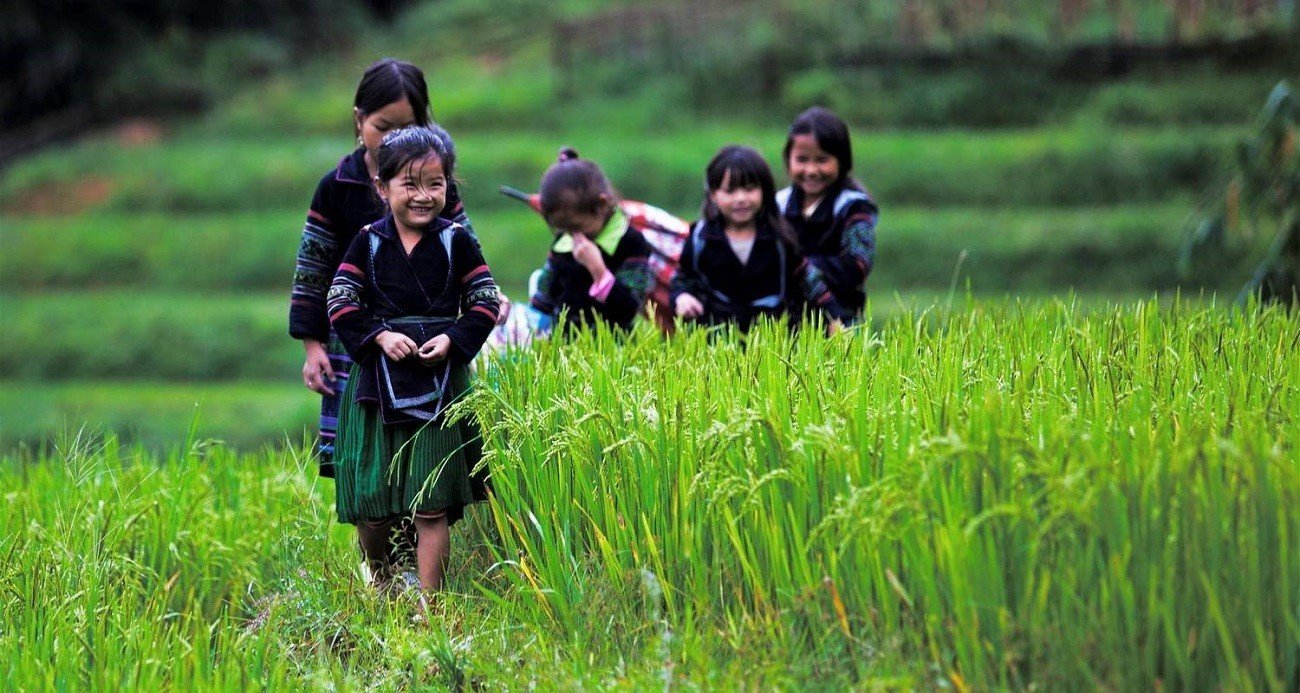
Understanding Sapa’s Unique Climate Patterns in 2025-2026
Perched at an impressive 1,500 meters (4,921 feet) above sea level, Sapa boasts a subtropical highland climate that creates four distinct seasons throughout the year. This elevation is what gives Sapa its magical misty mornings but also contributes to its sometimes extreme weather variations.
Recent climate data for 2025 shows that Sapa’s weather patterns are becoming slightly more unpredictable due to climate change, with:
- Temperature range: 2°C to 29°C (35°F to 84°F) throughout the year
- Average humidity: 75-90% during rainy months, 60-75% in drier periods
- Annual rainfall: Approximately 1,800mm, with over 60% concentrated between June and August
- Elevation influence: Temperature drops approximately 1°C for every 150m of elevation gain when trekking
Understanding these patterns is crucial for planning your visit, as weather conditions directly impact visibility of Sapa’s famous rice terraces, accessibility of trekking routes, and overall comfort during your stay.
For travelers planning to combine northern Vietnam adventures, consider that the best time to visit Halong Bay often aligns with Sapa’s optimal seasons, allowing for a perfect multi-destination itinerary.
The 7 Worst Months to Visit Sapa: June to August 2025-2026 Breakdown
June: The Beginning of Monsoon Troubles
As summer arrives, June marks the official start of Sapa’s challenging monsoon season. While the first half of the month may still offer some decent days, conditions deteriorate rapidly as June progresses.
- Average rainfall: 270mm (increasing from 2024’s 250mm)
- Rainy days: 18-22 days
- Temperature range: 18°C to 29°C (64°F to 84°F)
- Humidity levels: Approximately 85-90%
- Key challenges: Increasing fog density, early landslides on popular trekking routes
The combination of high temperatures and excessive humidity creates a greenhouse effect that makes outdoor activities uncomfortable. June visitors often report difficulty photographing the iconic landscapes due to persistent low cloud cover and haze.
July: Peak Monsoon Intensity
July unquestionably earns its reputation as the absolute worst time to visit Sapa in 2025, with meteorological data showing it as the rainiest month of the year.
- Average rainfall: 350mm (a 10% increase from previous years)
- Continuous rain patterns: Often 7-10 consecutive days of heavy precipitation
- Flash flood risk: High, particularly in valleys and lower-lying villages
- Trail conditions: 65% of popular hiking paths reported as “difficult to dangerous”
- Road closures: Highway 4D from Lao Cai to Sapa experiences frequent landslides
Local tourism operators typically reduce tour options by approximately 40% during July, and many homestay experiences in remote villages become inaccessible. Several weather stations in the region have recorded rainfall intensity exceeding 70mm per hour during July storms—enough to trigger immediate flash flooding.
August: Persistent Precipitation Problems
While slightly less severe than July, August continues the monsoon pattern with only marginal improvements.
- Average rainfall: 320mm
- Rainy days: 20-24 days
- Visibility issues: Morning fog extending until noon on 80% of days
- Transportation disruptions: 30% increased travel time from Hanoi due to road conditions
- Indoor humidity: Many budget accommodations report persistent dampness problems
August does bring the advantage of lush, vibrant green rice terraces at their fullest growth stage—but actually seeing them through the fog and rain remains the primary challenge.
As local guides often say: “In August, you might need to wait three days just to get one clear hour for photos.”
The 5 Best Alternative Times to Visit Sapa in 2025
March to May: Spring’s Perfect Balance
Spring emerges as one of the most rewarding times to experience Sapa, offering comfortable temperatures and natural beauty without extreme weather challenges.
- March temperatures: 10°C to 20°C (50°F to 68°F)
- April and May temperatures: 15°C to 25°C (59°F to 77°F)
- Rainfall: Minimal (30-80mm per month)
- Unique spring highlights:
- Cherry and plum blossoms throughout March
- Water buffalo returning to terraced fields for plowing
- Spring planting ceremonies among ethnic minority villages
- Crystal-clear mountain visibility (95% chance of Fansipan views)
The spring season offers a photographer’s dream with newly planted rice paddies creating reflective mirrors across the landscape. Cultural events like the “Going to the Field” festival provide authentic glimpses into local agricultural traditions.
Traveler’s tip: Book your luxury cruise in Halong Bay before or after your Sapa visit during this season for perfect weather conditions at both destinations.
September: Golden Harvest Perfection
September stands out as perhaps the single best month to visit Sapa in 2025, marking the dramatic transition from rainy season to autumn with:
- Average rainfall: Drastically reduced to 100mm (compared to August’s 320mm)
- Temperature range: Comfortable 14°C to 24°C (57°F to 75°F)
- Rice terrace colors: Spectacular gold and amber as harvest approaches
- Sunshine hours: Average of 5-6 hours daily
- Harvest celebrations: Local ethnic minority harvest festivals in many villages
Photographers particularly value this month for the extraordinary light quality during golden hour, which bathes the terraces in warm tones.
October to November: Autumn Clarity
As autumn fully arrives, October and November offer distinct advantages for travelers seeking a more peaceful Sapa experience:
- October temperatures: 12°C to 22°C (54°F to 72°F)
- November temperatures: 8°C to 18°C (46°F to 64°F)
- Rainfall: Minimal (40-60mm monthly)
- Humidity: Drops to year-low levels (approximately 60-65%)
- Tourist density: 40% reduction from peak seasons
- Mountain visibility: Exceptional clarity with far-reaching panoramas
While the iconic rice terraces are harvested by mid-October, the landscape transforms into a tapestry of autumn colors from the native forests. Trekking becomes particularly rewarding with cooler temperatures, dry trails, and far fewer fellow hikers on popular routes.
Local insight: November brings the unique “Cloud Hunting” season when early morning temperature differentials create spectacular cloud formations below popular viewpoints.
December to February: Winter’s Ethereal Beauty
For adventurous travelers willing to brave cooler temperatures, winter offers Sapa’s most mystical atmosphere:
- December temperatures: 5°C to 15°C (41°F to 59°F)
- January and February temperatures: 2°C to 12°C (35°F to 54°F)
- Potential frost days: 10-15 annually (concentrated in January)
- Snowfall possibility: 20% chance at elevations above 1,800m
- Winter phenomena: “Sea of clouds” effect on 70% of mornings
- Tourist density: Lowest of the year (except Vietnamese New Year)
Winter transforms Sapa into a mystical landscape where morning mist creates ethereal scenes throughout the valleys. While temperatures can drop significantly at night, daytime conditions are perfect for active trekking without overheating.
For those interested in cultural experiences, winter is when many ethnic minority groups celebrate their most important traditional festivals, with colorful costumes and ancient rituals on display.
Essential 2025 Sapa Packing List by Season
Spring Packing Essentials (March-May)
Spring’s variable conditions require strategic layering and preparation for both sunny days and occasional showers:
- Clothing layers:
- Moisture-wicking base layers (2-3 sets)
- Light fleece or softshell jacket
- Waterproof/windproof outer shell
- Convertible hiking pants (long to short)
- Quick-dry underwear and socks (3-4 pairs)
- Footwear and accessories:
- Broken-in waterproof hiking boots with ankle support
- Trekking poles for steep sections
- Polarized sunglasses (essential for mountain glare)
- Wide-brimmed hat with chin strap
- Lightweight gloves for early mornings
- Technology and safety:
- Portable charger (20,000+ mAh recommended)
- Waterproof phone case or dry bag
- Headlamp with spare batteries
- First aid kit with blister treatment
Spring-specific item: Lightweight mosquito-repellent clothing as insects begin returning in May.
Summer Monsoon Survival Kit (June-August)
If you must visit during the challenging summer months, these items become absolute necessities:
- Rain protection:
- High-quality rain poncho (covering both you and backpack)
- Waterproof pack cover (separate from poncho)
- Quick-dry microfiber towels (2-3)
- Waterproof stuff sacks for electronics and clothing
- Plastic ziplock bags in various sizes
- Clothing considerations:
- Synthetic or merino wool clothing only (avoid cotton entirely)
- Extra socks (minimum 5 pairs)
- Dedicated “dry” outfit kept sealed for evenings
- Anti-fungal powder or spray
- Long-sleeved options despite heat (for leech protection)
- Safety equipment:
- Trekking poles with mud baskets
- High-traction hiking sandals for village walks
- Emergency whistle and light
- Portable water filter or purification tablets
- Anti-leech socks for jungle treks
Summer-specific item: Portable dehumidifier packets for your luggage and hotel room.
Autumn Adventure Gear (September-November)
Autumn’s perfect conditions make it easier to pack light while still being prepared:
- Clothing strategy:
- Light to mid-weight base layers
- Versatile mid-layer (fleece or light down)
- Wind-resistant soft shell
- Comfortable hiking pants (avoid shorts in November)
- Light gloves and beanie for morning starts
- Photography equipment:
- Tripod for golden hour shots
- Polarizing filter for landscape photography
- Extra memory cards (autumn colors fill storage quickly)
- Lens cleaning kit for dust
- Comfort items:
- Hydration bladder (2L minimum)
- Electrolyte packets
- High-energy snacks
- Sunscreen (still necessary despite cooler temperatures)
- Lip balm with SPF
Autumn-specific item: Binoculars for spotting wildlife that becomes more active during harvest season.
Winter Weather Warriors (December-February)
Winter demands serious cold-weather gear, especially for higher elevation treks:
- Cold-weather clothing:
- Thermal base layers (top and bottom)
- Mid-weight insulating layer
- Down jacket (600+ fill power)
- Waterproof/windproof outer shell
- Insulated hiking pants or softshell with thermal leggings
- Warm hat covering ears
- Insulated waterproof gloves
- Extremity protection:
- Merino wool socks (thick + liner socks)
- Waterproof insulated hiking boots
- Gaiters for potential snow
- Hand and toe warmers
- Buff/neck gaiter or scarf
- Winter-specific needs:
- Thermos for hot drinks
- High-calorie snacks (you burn more calories in cold)
- Moisturizer and lip balm for dry air
- Sunglasses (winter glare can be intense)
- Microspikes for icy sections (if hiking Fansipan)
Winter-specific item: A quality camera with extended battery life (cold temperatures drain batteries faster).
Seasonal Activities Calendar: Making the Most of Each Month
Spring Cultural Immersion (March-May)
Spring offers unique seasonal activities that combine natural beauty with cultural experiences:
- March highlights:
- Observe traditional plowing ceremonies in Ta Van village
- Photograph plum and cherry blossoms around Sapa town
- Participate in the Xuong Dong Festival (Going to the Field)
- Explore less-visited Silver Waterfall before summer crowds
- April opportunities:
- Witness rice planting in action (hands-on options available)
- Enjoy perfect temperatures for the full Fansipan summit trek
- Visit indigo dyeing workshops as new production begins
- Experience the Bat Xat Spring Festival with Red Dao people
- May experiences:
- Photograph “mirror season” as newly planted rice creates reflective surfaces
- Enjoy rhododendron blooms on higher mountain slopes
- Participate in water buffalo bathing rituals with H’mong families
- Trek to remote waterfalls at peak flow before summer rains intensify
Signature spring experience: Join a traditional H’mong New Year celebration (dates vary by lunar calendar) featuring distinctive “pulling wife” ceremonies and buffalo fights.
Summer Alternative Activities (June-August)
While outdoor activities are limited, summer offers unique indoor and cultural experiences:
- June possibilities:
- Explore the covered Sapa Market during rain showers
- Take cooking classes with Red Dao herb specialists
- Visit textile cooperatives to learn traditional weaving techniques
- Enjoy hot springs and herbal baths (ideal in wet weather)
- July indoor options:
- Tour the Sapa Museum and Cultural Center
- Participate in embroidery workshops with master crafters
- Experience rice wine distilling demonstrations
- Visit the indoor exhibits at Cat Cat Cultural Village
- August opportunities between rains:
- Photograph dramatic cloud formations when breaks occur
- Visit the Topas Ecolodge for spectacular (though possibly foggy) views
- Experience ethnic minority music performances in Sapa town
- Shop for authentic handicrafts at reduced rainy season prices
Signature summer experience: Participate in a traditional Red Dao herbal bath ceremony—most potent during summer when medicinal plants reach peak potency.
Autumn Harvest Adventures (September-November)
Autumn provides the richest agricultural and outdoor experiences:
- September highlights:
- Photograph the famous golden rice terraces at sunrise
- Participate in harvest activities with local families
- Attend harvest festivals with traditional dance and music
- Trek the full Muong Hoa Valley when trails are at their best
- October opportunities:
- Sample new rice wine during post-harvest celebrations
- Hike to Love Waterfall with reduced crowds
- Visit the Silver Waterfall when surrounded by autumn foliage
- Experience the unique Com (young rice) Festival
- November activities:
- Enjoy clear views of Fansipan Mountain (highest success rate)
- Trek to Y Linh Ho village through fall landscapes
- Photograph “cloud hunting” phenomenon from Tram Ton Pass
- Experience the spectacular Bac Ha Sunday Market at its authentic best
Signature autumn experience: Join a multi-day trek incorporating homestays during harvest season, when families share traditional meals made from their freshly harvested crops.
Winter Wonder Experiences (December-February)
Winter transforms Sapa into a mystical landscape with unique seasonal offerings:
- December highlights:
- Witness the “sea of clouds” phenomenon from O Quy Ho Pass
- Experience Sapa’s Christmas decorations with mountain backdrops
- Enjoy mulled rice wine at evening bonfires
- Trek to frozen waterfalls after cold snaps
- January opportunities:
- Photograph rare frost flowers on mountain vegetation
- Experience New Year celebrations in Sapa town
- Search for snow on Fansipan’s higher slopes
- Enjoy Vietnamese Tet preparations in local villages
- February activities:
- Witness plum and peach blossoms (first signs of spring)
- Participate in Lunar New Year celebrations (dates vary)
- Experience the Long Tong Festival (Going to the Field)
- Enjoy the clearest stargazing conditions of the year
Signature winter experience: Join a photography tour specifically designed to capture the mystical “sea of clouds” phenomenon that reaches its peak frequency during winter mornings.
Transportation Considerations During Each Season
Rainy Season Transport Challenges (June-August)
The rainy season creates significant transportation obstacles that require careful planning:
- Road safety concerns:
- Lao Cai to Sapa route (Highway 4D) experiences frequent landslides
- Average travel time increases by 30-45 minutes due to road conditions
- Night bus services often delayed or occasionally canceled
- Sections near Tram Ton Pass particularly vulnerable to rock slides
- Local transportation limitations:
- Motorcycle rental strongly discouraged due to slippery conditions
- Many remote villages become inaccessible by standard vehicles
- Shuttle services to trailheads operate at reduced frequency
- Private transfers recommended over public options for flexibility
- Train considerations:
- Hanoi-Lao Cai overnight train remains most reliable option
- Book upper berths to avoid potential moisture issues
- Allow extra buffer time between train arrival and onward transport
- Consider staying overnight in Lao Cai during heaviest rain periods
Expert tip: “During summer months, always book accommodation with free cancellation policies and remain flexible with your itinerary. We’ve seen travelers stranded for 2-3 extra days due to road closures.” — Local Sapa tour operator
Optimal Transportation Seasons (September-May)
The dry seasons offer significantly improved transportation options:
- Road conditions:
- Hanoi to Sapa express buses operate at full capacity
- Average journey time: 5.5 hours (compared to 7+ hours in rainy season)
- New Noi Bai-Lao Cai highway reduces travel time
- Mountain passes remain clear and scenic
- Local mobility options:
- Safe motorcycle rental available for experienced riders
- Expanded shared shuttle services to all major villages
- Reliable taxi services with standardized pricing
- Electric vehicle rental in Sapa town (new for 2025)
- Transportation booking advice:
- Reserve overnight trains 3-4 weeks in advance for weekend travel
- Consider VIP limousine buses for daytime journeys with mountain views
- Book multi-day cruise packages that include Hanoi-Halong Bay-Sapa transportation
- Utilize ride-sharing apps that now service the Sapa region
Local insight: “For the ultimate flexibility, many visitors now choose private transfer services that can stop at scenic points along the Hanoi-Sapa route, effectively turning the journey into part of the experience.” — Sapa Tourism Board
Expert Advice for Traveling During Sapa’s Challenging Times
If your schedule absolutely requires visiting during the challenging summer months, these expert strategies can help salvage your experience:
Flexibility is Your Best Strategy
- Itinerary design:
- Plan for indoor activities on alternate days
- Book accommodations with 24-hour cancellation policies
- Consider a longer stay to increase chances of weather breaks
- Have backup destinations (Hanoi, Ninh Binh) if conditions worsen
- Daily scheduling approach:
- Rise early (4:30-5:00 AM) to catch potential morning clearing
- Plan major activities before 11:00 AM when afternoon rains typically begin
- Reserve photography sessions for the first signs of clearing skies
- Utilize weather apps specific to mountain regions for hourly forecasts
Accommodation Strategies for Rainy Season
- Location considerations:
- Stay in Sapa town center for access to activities during downpours
- Avoid remote homestays without reliable road access
- Choose hotels with on-site restaurants and activities
- Consider higher-elevation lodging (often above the heaviest cloud cover)
- Room selection priorities:
- Request upper-floor rooms to avoid potential ground-level moisture
- Confirm in-room dehumidifiers or air conditioning
- Choose rooms with covered balconies for outdoor space during rain
- Verify backup power systems (outages more common in rainy season)
Luxury option: “The Topas Ecolodge and Hotel de la Coupole offer excellent rainy day facilities, including indoor pools and spa services that make even the wettest days enjoyable.” — Vietnam Travel Magazine
Health and Safety Precautions
- Medical preparations:
- Pack water purification tablets or devices
- Bring extra prescription medications (pharmacy access may be limited)
- Include anti-fungal treatments for potential foot issues
- Consider leech repellent for jungle treks
- Emergency planning:
- Purchase comprehensive travel insurance with evacuation coverage
- Register your travel plans with your embassy
- Download offline maps of the region
- Save emergency contacts for local hospitals and police
Must-have app: “The ‘Sapa Weather Live’ app provides microclimate forecasts for specific villages and trekking routes, using data from newly installed weather stations throughout the region.”
FAQs About Visiting Sapa in 2025
Can I still see rice terraces if I visit in winter?
While winter (December-February) doesn’t showcase the iconic green or golden rice terraces, it offers a different kind of beauty. The terraced fields lie fallow during winter, revealing their impressive architectural structure. The “sea of clouds” phenomenon, where early morning mist fills the valleys below viewing points, creates equally spectacular photography opportunities. For rice terraces specifically, plan your visit between May (vibrant green) or September (golden harvest) instead.
How dangerous are the summer landslides really?
The landslide risk during summer months (June-August) is significant and shouldn’t be underestimated. In 2024, over 30 road-blocking landslides were recorded on the main highway between Lao Cai and Sapa. While major accidents involving tourists are rare, delays of 4-12 hours are common, and some remote villages can be cut off for days. The risk is highest after consecutive days of heavy rain, especially in July when the ground is already saturated. Always follow local authority warnings and never attempt to cross flowing water on roads or trails.
Are there any advantages to visiting during the rainy season?
Despite the challenges, summer visits do offer some unique advantages:
- Significantly lower prices: Accommodations often discount rates by 30-50%
- Fewer tourists: Popular viewpoints and attractions are less crowded
- Lush scenery: The landscape reaches peak verdancy and waterfall volume
- Cultural authenticity: With fewer tourists, interactions with local communities feel less commercialized
- Photography opportunities: Brief clearing periods after rain create dramatic lighting conditions
For budget travelers willing to be flexible and patient, the cost savings can make summer visits worthwhile.
What’s the best way to combine Sapa with other Vietnam destinations in 2025?
For optimal weather alignment, consider these multi-destination itineraries:
- Spring combination (March-May): Start with Halong Bay cruising during ideal sailing conditions, then head to Sapa for spring blossoms and comfortable trekking, followed by Hanoi’s pleasant spring temperatures.
- Autumn perfect match (September-November): Begin in Sapa for the golden harvest season, continue to Halong Bay for clear skies and comfortable temperatures, then explore central Vietnam (Hoi An, Hue) as the rainy season ends there.
- Winter contrast (December-February): Start with chilly but mystical Sapa experiences, then travel south to central and southern Vietnam for warm beach weather in Danang, Nha Trang, or Phu Quoc.
The ideal Vietnam itinerary often involves moving north to south or vice versa, following the optimal weather patterns throughout the country.
Conclusion: Making Your Sapa Journey Worthwhile in 2025
Sapa remains one of Vietnam’s most magical destinations, where ancient agricultural traditions and spectacular landscapes create unforgettable experiences—but timing truly is everything.
For most travelers, the worst time to visit Sapa in 2025 is unquestionably June through August, when heavy rains transform paradise into a challenging environment of mud, fog, and limited accessibility. These summer months combine uncomfortable humidity, poor visibility, transportation difficulties, and restricted activity options.
Instead, prioritize visits during:
- September for golden rice terraces and ideal weather
- March to May for comfortable temperatures and cultural festivals
- October to November for clear mountain views and fewer tourists
- December to February for mystical winter landscapes (if you can handle the cold)
By choosing the right season for your personal priorities—whether photography, trekking, cultural immersion, or comfort—you’ll experience the Sapa that has captivated travelers for generations. And remember, for the ultimate northern Vietnam experience, combine your Sapa adventure with a luxury Halong Bay cruise during the optimal seasons for both destinations.
Whatever season you choose, Sapa’s ethnic diversity, ancient terraced landscapes, and mountain majesty promise memories that will last a lifetime—just be sure to pack appropriately and plan wisely for 2025’s weather patterns.
- Hotline | WhatsApp: +84.978.358.422
- Phone | WhatsApp: +84.962.261.687
- Email: halongbayluxcruises@gmail.com or vietnammarveltravel@gmail.com
- Website: halongbayluxcruises.com
- Reviews: Top Halong Bay Cruise Reviews on TripAdvisor
- Fanpage: https://www.facebook.com/halongbayluxcruises

